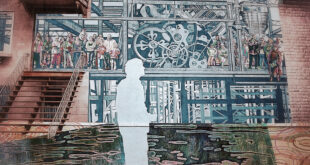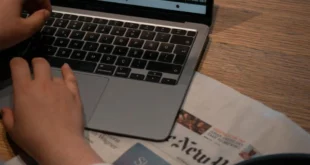Ever since 1995, the News World conference has been bringing together the most important editors, reporters, and manufacturers in the international broadcast news industry.
Its purpose was simple, and growing in importance every year - to debate the impact advancing technology was having on the quality of their journalism, to agree on common practises over safety in the field, and to argue over the ethics of the trade with politicians, NGOs and all those other groups whose lives and professions are affected by the way we report them.
But until last year, I think we were missing a trick. Why weren't we inviting journalism students from around the world to tap into the huge pool of power, experience, and influence that came together under our roof? We attract people who by and large have little time to spend even with students in their home countries, let alone from other corners of the world.
At our 2002 conference, in Dublin last November, we took a modest first step in the right direction by launching The Next Generation, enabling around 80 students to participate in our main debates and attend a series of exclusive master classes given by leading figures from right across the industry.
Salim Amin, boss of Africa's largest news agency, Camerapix, discussed the challenges of covering a continent of such vast size and political and ethnic divergence. Andrew Kain, founder of the hostile environment training company AKE, described the growing dangers facing journalists in the field and Sony demonstrated leading-edge news camera and editing technologies. We looked at ways some universities are now taking their communications skills off campus and turning private study into public service, and asked whether journalism courses are turning out the candidates the ever-changing news industry needs. And we wound up the strand with a masterclass for every delegate to News World - a screening of the extraordinary Brook Lapping documentary on President Bush's coalition against terror, followed by an explanation of the way its makers turned heads of state into talking heads and put together their own coalition of production partners to pay for it all.
Most heartening of all, perhaps, was the warmth and enthusiasm with which the Next Generation program was received by regular News World delegates. Chris Cramer, CEO of CNNI, and BBC head of news Richard Sambrook, both offered to talk to the Next Generation students and there was general agreement that their voices added an important new dimension to the debates.
It was, in truth, a tentative first step. Virtually all of the students came from two sources - London's University of Westminster, where News World academic advisor Rob Brown is a lecturer, and the Dublin Institute of Technology, whose journalism head Michael Foley offered us invaluable support and advice. On the other hand, the students themselves came from across the globe and will take their experiences back to Scandinavia, mainland Europe, China, India, Pakistan, the Middle East, and elsewhere.
Our goal for 2003 is to find ways to make it possible for students and lecturers to travel to Dublin from universities further afield and to participate in an extended program of informal lectures, debates, and demonstrations. With the dust of war still settling, there has never been a moment in our nine-year history when the standards of practices of broadcast journalism were in greater need of debate, and the lessons we learn in Dublin, between October 21and 23, should be passed on to the next generation of journalists who will have to live by them.
 Arab Media & Society The Arab Media Hub
Arab Media & Society The Arab Media Hub




